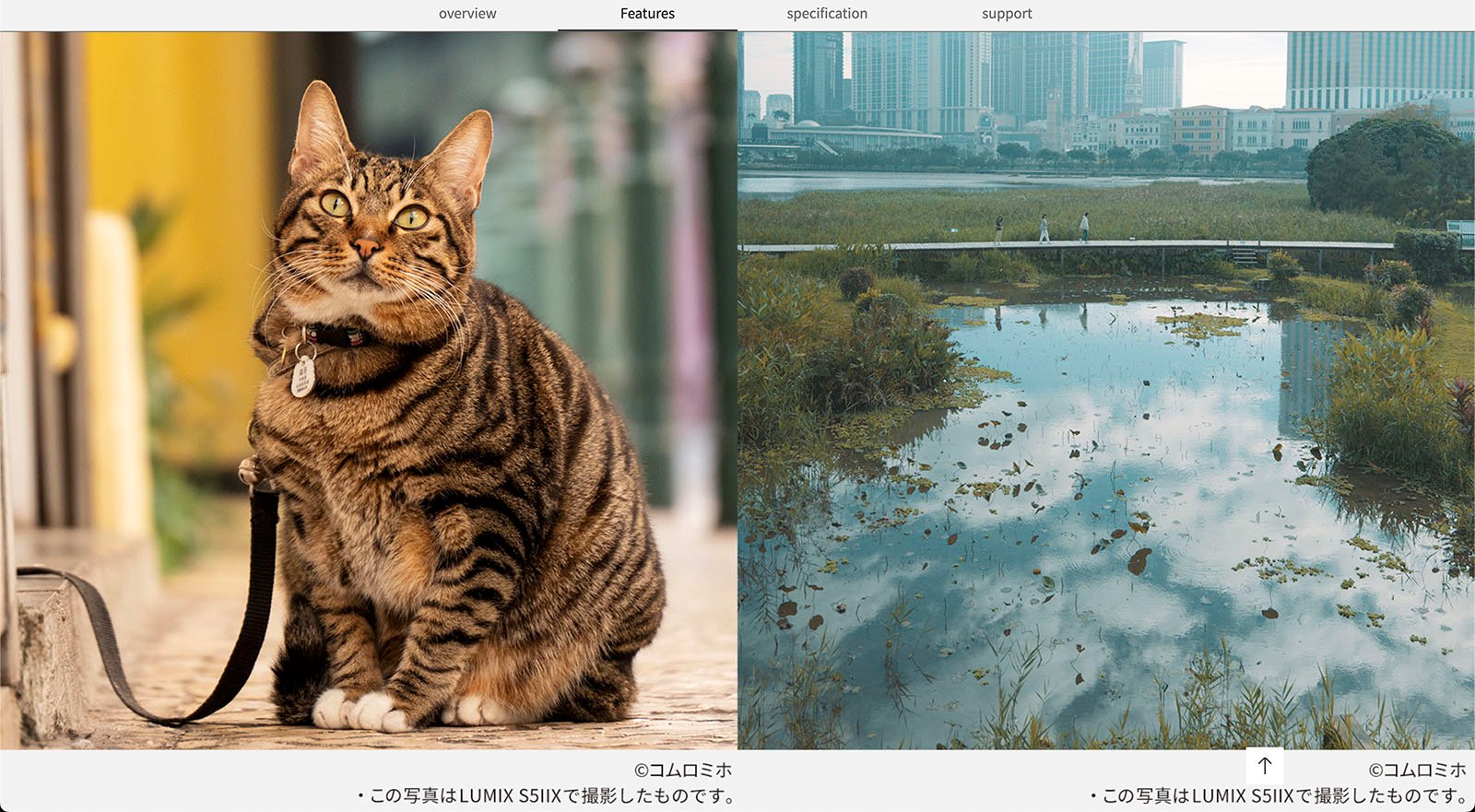![]()
When companies announce and market new cameras, they include sample images. By default, most people would believe these photos are from the latest product, and often, they are. But not always. Panasonic reportedly found itself on the wrong side of this situation last week when it announced the Lumix S9.
Photographers in Japan noticed some oddities on the Japanese Lumix S9 product page, which has since been updated. As spotted by Photo Rumors, the situation gained significant traction among Japanese photographers.
X (formerly Twitter) user @zac_de_la_rocha posted a series of tweets in Japanese that describe how numerous photos on the official S9 product page were stock images, including this one of a cute dog running in the grass. Other images Panasonic used to illustrate animal detect autofocus included photos that weren’t shot with the Lumix S9 — or any Panasonic camera. In fact, one was captured by a Nikon Ambassador.
Note: Due to limitations with embedding posts from X, the included posts must be translated separately. Users can click the X logo in the top right corner of the embeds to open the posts on X.com, where they can then be translated.
マーケティングは失敗してるけど、チャレンジは評価すると言いましたが、ごめん前言撤回どころか、違った。真逆だった。
フリッカー写真どころの話ではなく、S9の製品ページ、コピーライト無しの写真、殆どストックフォトじゃん。撮影画面の写真ですらはめ込みなところも。
続く#lumix https://t.co/WVCkOzQwNr
— HertZ(金豚) (@zaq_de_la_rocha) May 27, 2024
Panasonic is not the first company to use stock images to illustrate a new camera or lens, and it won’t be the last. However, that’s no excuse, and Panasonic should know better than resorting to these deceptive marketing practices.
Once Japanese users noticed the issues with the imagery on the Lumix S9’s product page, Panasonic was quick to respond.
“Regarding the images on the product website for the new full-frame mirrorless interchangeable lens camera Lumix S9, we have received many inquiries,” Panasonic explains in a machine-translated version of the company’s announcement.
Panasonic acknowledges using images from stock photo services to introduce and explain some of the S9’s functions and features. The company says there was a note that some photos were not taken with the new product but that the “content and location of the notice were difficult for customers to understand.” While the tone of the translated version is a bit off, the primary admission is that the product page was insufficiently clear about the source of specific images.

“As a camera manufactuer, we strive to meet the expectations of our customers. We will be discussing the review of the content of the Lumix website,” Panasonic says. “We apologize to all Lumix and camera fans for causing great concern. Again, [we’re] very sorry for causing you concern. All of us involved promise to be more sincere in our approach to you and to make changes.”
Unfortunately, this issue is not limited to just the Lumix S9 product page. X user @photostudio9 posted evidence of stock images on other product pages, including for the S5 camera.
被写体検出とかレンズの説明はダメでしょ
Lumix S5https://t.co/n6iovC0ygohttps://t.co/kWpGsOrLDJ
DC-G100DWhttps://t.co/6z7UJP4sVihttps://t.co/yFjIfWLFb2 pic.twitter.com/TMc1TJtH2r— studio9/写真のことが全部わかる本 完全版 発売中! (@photostudio9) May 27, 2024
Another user, @FukuiAsobiWeb, of AsobiNet fame, found additional examples of stock photos being used in Panasonic’s Japanese marketing materials.
ちなみに12-32mmの作例っぽい写真で話題になってるアレはコレらしい。
EOS 5DsR
428mm F5.3
レンズはタムロン150-600mm G2https://t.co/VxN9pxCrlw https://t.co/sAC1zMPLzY pic.twitter.com/XZXn6jQc0A— とるなら (@FukuiAsobiWeb) May 27, 2024
For what it’s worth, Panasonic’s S9 product page in the United States appears to feature wholly original images crafted specifically for the Lumix S9 announcement and marketing campaign.

While there are instances when it is entirely reasonable to use sample photos from a different camera — say a Lumix S5 II instead of the S9, given that the cameras share an imaging pipeline — using stock photos is a misrepresentation, especially when the images were shot using a competitor’s camera and lens. If the look of images shot with different, non-Panasonic equipment were indistinguishable, it would significantly undercut the crux of a camera company’s marketing. Not all cameras are made equal, so companies must deliver honest, useful illustrations to prospective customers.
Panasonic has since removed stock images from its Lumix S9 page in Japan and added large captions for images shot with other Lumix products, like the S1 or S5IIX cameras. It should have been like that from the start, but better late than never.
